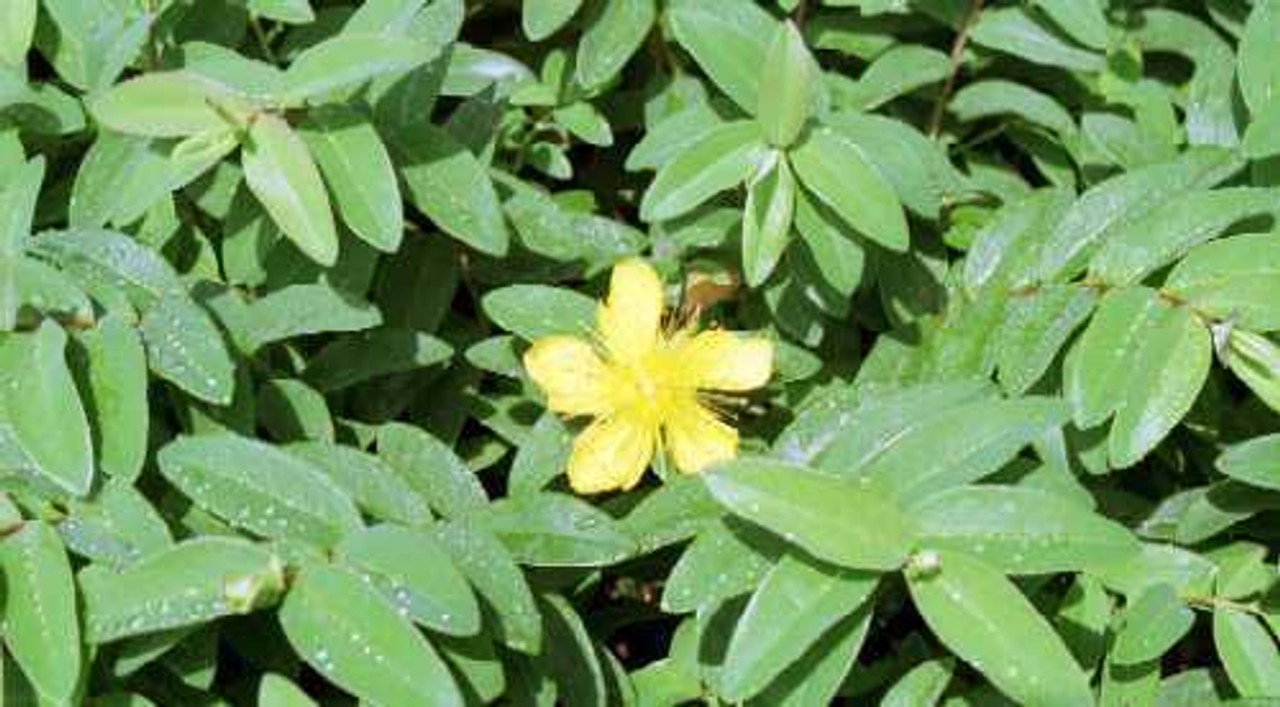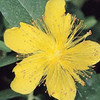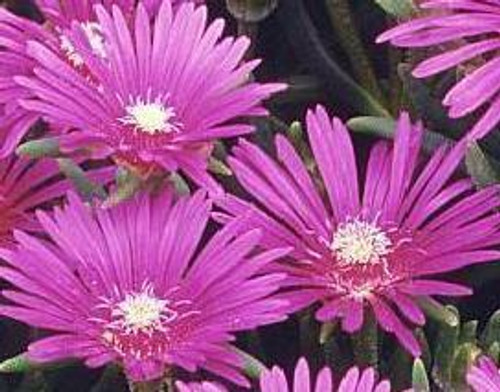Product Description
Hypericum calycinum (3.5-inch pot)
Common Name: St John's-wort, Aaron's beard, creeping St. John's wort
Height: 12-18 Inches
Spread: 24 Inches
Hardiness Zone: 5-9
Full Sun to Part Shade
Semi-Evergreen
Ground cover for medium to large areas
Not for small gardens
Blooms yellow early Summer
semi-evergreen subshrub or shrublet.
Leaves emerges chartreuse-bronzed, but quickly turns to medium green then dark green in sunny area; and lighter, yellowish green in shade. Fall color is more of a deep blue-green. Large (2 to 3 inch), rose-like bright canary yellow flowers appear singly or in groups of 2 to 3 and cover the plant in June and July and sporadically through September.
Prefers moist, well-drained, average fertile soil in partial shade; St. Johns Wort is tolerant of a wide range of well-drained soils. Evergreen in warm winter climates, may suffer some tip dieback in cold winter climates, but blooms on new growth each spring. Shear or mow plants in late winter or early spring every 2 to 3 years to induce new growth. Spreads rapidly by underground stems and can be invasive in ideal growing conditions.
Use as ground cover, rock gardens, border fronts, naturalized plantings, and excellent for embankments or hillsides. Versatile plant can be used as a flowering shrub or ground cover. Good for planting under trees where it competes well with shallow tree roots.
Not that we are making any recommendations, but historically St. Johns Wort has been used as an antiseptic and anti-depressant.
Add a Burst of Sunshine to Your Garden with St. John's Wort!
Hypericum calycinum, commonly known as St. John's Wort or Aaron's Beard, is a versatile and vigorous groundcover that brightens up any landscape with its cheerful yellow flowers. This low-maintenance, semi-evergreen shrub thrives in a variety of conditions, making it an excellent choice for adding color and texture to challenging areas in your garden.
St. John's Wort is a spreading, mat-forming shrub that typically grows 12-18 inches tall and spreads indefinitely. It features attractive, oval-shaped, dark green leaves that provide a lush backdrop for the abundant blooms. In summer, the plant explodes with a profusion of bright yellow, saucer-shaped flowers, each with a prominent cluster of stamens that add a fluffy texture. The flowers are not only beautiful but also attract pollinators like bees and butterflies. This adaptable plant tolerates a wide range of conditions, including full sun to partial shade and various soil types.
- Mature Size: 12-18 inches tall, spreading indefinitely
- Flower Color: Bright yellow
- Bloom Time: Summer
- Foliage: Dark green, oval-shaped, semi-evergreen
- Growth Habit: Spreading, mat-forming
- Light Needs: Full sun to part shade (best flowering in full sun)
- Soil Needs: Adaptable to various soil types, prefers well-drained soil
- Hardiness Zones: 5-9 (USDA)
- Special Features: Showy flowers, attracts pollinators, drought tolerant, erosion control, low maintenance
Planting:
- Timing: Plant in spring or fall for best results.
- Location: St. John's Wort is adaptable to both full sun and partial shade. However, it will produce the most flowers in full sun locations.
- Soil Preparation: While it tolerates a variety of soils, amending the soil with compost or other organic matter will improve drainage and fertility, promoting healthier growth.
- Spacing: Space plants 18-24 inches apart to allow for their spreading growth habit.
- Planting Depth: Plant at the same depth as the nursery container.
- Watering: Water thoroughly after planting and regularly until it is established.
Care:
- Watering: Once established, St. John's Wort is relatively drought-tolerant. Water deeply during prolonged dry spells, especially during the first growing season.
- Fertilizing: Fertilize in spring with a balanced fertilizer to promote vigorous growth and flowering.
- Pruning: Minimal pruning is required. You can shear back the plant in late winter or early spring every few years to rejuvenate growth and encourage denser foliage.
- Mulching: Apply a layer of mulch around the plants to retain moisture, suppress weeds, and protect the roots.
- Pest and Disease Control: St. John's Wort is generally pest and disease resistant.
Uses in the Garden:
- Groundcover: Ideal for creating a low-maintenance, flowering groundcover in sunny or partially shaded areas.
- Erosion Control: The dense root system helps stabilize slopes and prevent erosion.
- Borders and Edging: Adds a bright and cheerful border to flower beds and pathways.
- Rock Gardens: Thrives in the well-drained conditions of rock gardens.
- Underplanting: Can be used to underplant shrubs or trees, adding color, and suppressing weeds.
- Containers: Can be grown in containers, adding a splash of sunshine to patios and balconies.
Important Note: While St. John's Wort is a valuable groundcover, it can spread aggressively in ideal conditions. It is essential to monitor its growth and control its spread as needed to prevent it from becoming invasive.
Brighten up your garden with the cheerful blooms and easy-care nature of Hypericum calycinum!
Other Details
The most important part of the plant is its root system. Healthy roots are the foundation of a healthy, vibrant plant. The type of plug container used is based on the specific needs of the plants. Perennials offered as bare root traditionally perform better when planted as bare root.Planted in a specialized mix, potted plants have well established root systems. Top growth stage will vary depending on the current life cycle and time of year when shipped. In Winter and early Spring dormant plants may be shipped. Dormant plants may be planted right away, even before the last frost date.
Most bare root varieties are field grown for at least one season, though Hemerocallis and Hosta are grown for two seasons. The bulk of the soil is removed during the harvesting process and the tops of most varieties are trimmed back to the crown. They are graded, packed in shredded aspen or sphagnum moss and stored in freezers until ready to be shipped.
See our Container Sizes and Bare Root Perennials pages for more information.
Plant information and care is provided in the Overview section, Plant Genus Page and general information is provided in the Planting Care & Guides. Additional questions can be asked on each Plant page.
Plant Spacing: Using the maximum mature spread or width of a plant to guide spacing, ensures space to grow to full size. To fill an area sooner, plant them closer together. Just remember, future thinning or transplanting may be needed.
Water: Keep a close eye on newly planted perennials, especially throughout the first growing year. Most early plant loss is due to too much or too little water!
Product Videos
Custom Field
Product Reviews
1 Review Hide Reviews Show Reviews
-
Fantastic!
The Hypericum Calycinum came beautifully packed, and each pot had a healthy plant with lots of roots and a larger vine than I expected. I could not be more pleased with this order, and will order from this vendor again.










